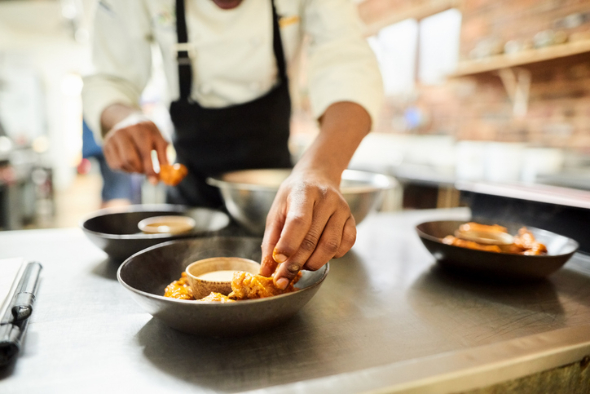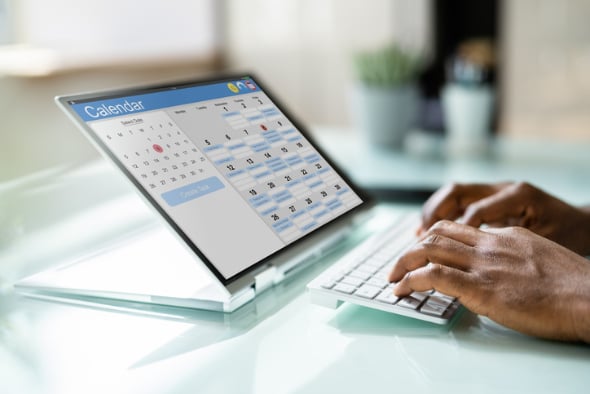What are bed and breakfast recipes?
Bed and breakfast recipes are often homestyle, comforting meals that are easy to prepare and designed to leave a lasting impression on guests. These recipes typically focus on fresh, local ingredients and are tailored to create a cosy, welcoming atmosphere.
In this blog we’ll cover why it’s important to have recipes prepared and how you can perfect your guest experience via food and beverages.
Treat guests to the best experience possible
Use Little Hotelier to more effectively sell to your guests, communicate with them, and engage them to inspire positive experiences and loyalty
Learn moreWhy are bed and breakfast recipes important for hosts?
Bed and breakfast recipes are important for you because they help create a more personal, memorable experience for your guests. A delicious, homemade breakfast can make your guests feel right at home and leave a lasting impression. Plus, serving up local ingredients or regional favourites gives your guests a taste of the area, making their stay even more unique.
It’s not just about filling stomachs—it’s about offering that extra touch that makes people want to come back. And having a good variety of recipes on hand helps you cater to different tastes and dietary needs, making sure everyone leaves happy and satisfied.
Should hosts serve bed and breakfast food?
When travellers are on the road there are two essential things they need; a place to sleep and a place to eat. Offering some range of food and beverage at your B&B will help generate as much revenue as possible from your guests.
However before you decide to implement an elaborate wine and dine menu you will need to plan ahead and assess whether your property should take this next step.
Here are four key questions you should ask:
1. Do you and your staff have the time to provide this extra service?
You should first assess if this additional workload will restrict the time you can spend on guests.
It’s true, nothing quite compares to a home cooked breakfast, but how can a guest enjoy their meal if there are stressed staff running around trying to do everything?
If your staff do not have time, then you could consider hiring additional staff to take on this task.
If budget doesn’t allow for new members of the team, you could lighten the admin load of current staff by employing technology solutions. For example, freeing them from their desk with cloud technology that will automatically update property rates across booking channels and your brand website, help plan your day, and take reservations while you sleep.
2. Does your hotel have the physical capacity to prepare and serve food?
If your property is limited in the amount of space and number of guest rooms you have then you probably won’t have anywhere for guests to sit and eat. Serving food and beverages would stretch your space too thin and be an unnecessary use of resources.
Instead, build your relationship with your fellow business owners and direct guests to local cafes and restaurants.
3. Would on-the-go options be better for your guests?
Your guests may sometimes just want to grab a bite to eat then go explore, or if they are travelling for business they may be short on time. A great way to increase revenue with these customers is with to-go sales. Items can be prepared the night before or even outsourced from a catering vendor.
On-the-go is a great method to increase revenue with little labor costs, here are some ideas:
- Sandwiches
- Cakes, muffins and quiches
- Fruit/Muesli bars
- Boxed Salad
- Tea/coffee, bottled water and juice
4. Would beverages alone be more effective?
It doesn’t matter if a hotel’s guests are business or leisure, coffee is usually expected and appreciated.
Serving guests a great cup of coffee is not only a low cost way to bring in extra sales, but it also can also be a great marketing tool to increase bookings. People love to post photos, or tag their location, of morning coffee.
Encourage them to build your social media exposure by making it special and unique.Hoteliers could also consider offering guests a happy hour where drinks and appetisers are discounted or consider a food and wine tasting that reflects the local area.

Feeding your guests without a bed and breakfast kitchen
Travelling can be tiring and with guests arriving from all different locations and at different times, they’re likely to be hungry.
Guests can get hungry at any hour, but for most hotels or B&Bs it is too expensive to keep a hotel kitchen open for 24-hour room service. For some small hotels, there may not even be much of a kitchen in which to cook anyway. But this doesn’t mean you have to let your customers go hungry. We’ve collected some simple options for treating your guests, without the need for your kitchen to be open.
No-bake cupcakes
Cupcakes are the perfect treat to serve with tea or coffee, especially after a guest has checked in after a long commute or business meeting. Even with just a fridge and a microwave, you can have cupcakes on-hand to serve your guests at any time. There’ll be no need for an oven.
The first recipe requires a microwave oven, but you can mix the basic ingredients together and store them in a fridge until needed by guests. The recipe is the same as for most cupcakes – flour, eggs, oil and sugar, with the addition of yoghurt and baking powder when you’re ready to pour into moulds and bake in the microwave.
A properly fluffy set of microwave cupcakes may take 15 minutes to cook and another 15 minutes to cool down and decorate, but if you have bookings for guests who haven’t arrived at 9pm, it’s the sort of snack you can quickly have ready for them.
The second no-bake cupcake recipe is an icebox cupcake. For this, you just need the basic ingredients and a freezer to keep your creation chilled. Cream, sugar, fruit and biscuits or crackers are all you need to make goodies that will delight a weary traveller. Best of all, you can make these in the morning and have available all evening. The recipe we have included here is for a full cake, but you can make individual cupcakes using the same recipe.
Sorbet
Sorbet is a health-conscious snack for all seasons. Refreshing in the heat of summer and just as tasty in winter, it’s also extremely easy to make in your hotel kitchen and guests will appreciate such a delicious snack. Similar to the icebox cupcakes, sorbet can be made and stored in the freezer until you need to serve it. Chopped fruit, citrus juice and sugar syrup is all you need to make a perfect sorbet. You can use many different flavour combinations, such as mango, berries, or even kiwi fruit but the one we’ve recommended here is lemon and watermelon.
Popcorn
Who doesn’t love popcorn? Guests who are looking for a late night snack while they relax can find everything they need in popcorn. All you need is some popping corn, loose kernels not pre-packaged, to put on the stove or in the microwave. For guests who want something sweet, glaze some honey or syrup over the popcorn or salt and butter for more savoury tastes. Homemade popcorn is low in calories so even the weight-watching guests will be happy.
Bed and breakfast menu with the best bed and breakfast recipes
Creating a memorable bed and breakfast menu is all about combining the right mix of homemade favourites with a touch of local flair. A well-curated menu gives guests the comfort of classic dishes while also offering something special that they’ll remember long after their stay.
Including award-winning recipes and a variety of options like scones, quiche, and other breakfast staples helps create a signature dining experience that reflects the warmth and charm of your property.
Award-winning bed and breakfast recipes
Award-winning recipes are often the stars of the bed and breakfast menu, known for their ability to make guests feel right at home while adding an element of indulgence. Think fluffy pancakes made from scratch, signature French toast with local berries, or house-made granola that has become a guest favourite. These recipes often come with a story or tradition behind them, giving guests a deeper connection to the property. Including such dishes can help set your B&B apart, offering guests a taste they can’t find elsewhere.
Bed and breakfast scone recipes
Scones are a bed and breakfast staple, perfect for adding a touch of homely elegance to your menu. Whether you serve them plain with clotted cream and jam or create seasonal variations like blueberry or pumpkin scones, these baked goods are easy to prepare and always a hit with guests. Warm, flaky scones paired with a hot cup of coffee or tea can become a cherished part of your breakfast offering, especially if you use locally sourced ingredients to give them a unique twist.
Bed and breakfast recipes: Quiche
Quiche is a versatile dish that can easily become a highlight of your breakfast menu. It’s a perfect way to offer guests something hearty and savoury without much effort. Classic quiche Lorraine, with its combination of eggs, bacon, and cheese, or a vegetable-packed quiche with seasonal produce, can cater to a variety of tastes. What makes quiche great for B&Bs is that it can be made in advance and served either hot or room temperature, making it both convenient for you and delicious for your guests.
Bed and breakfast menu ideas to boost orders
No trip away feels complete without a memorable food experience. Food and travel go hand-in-hand. If you’re imagining a trip to Italy, you might think of Trevi Fountain, Colosseum or mopeds, but before that, you’re probably salivating over three square meals of pizza and pasta.
Research by Elliotts Agency unveiled that customers decide on food in restaurants based on how they read a menu. By tailoring your menu with the following key findings in mind you can entice more diners, sell higher-profiting dishes and deliver an unforgettable culinary experience that will have your guests returning again and again.
Customers won’t read the whole menu or notice if you try sway their decision
In Elliotts’ findings, the most cynical diners were under 30, but even then only 35% thought they were being convinced to order a particular dish. It was also found that only 31% of customers read the description of more than five items on the menu.
This can be used to your advantage; if your guests rarely notice when you are trying to influence their decision then you can use your menu to advertise meals that draw in the highest profit margin. Tip the odds by using some simple psychology: larger headings, stronger colours, and enticing language.
But be sure not to overwhelm guests with options, it’s best to stick with 10 main dishes or less and use short descriptions that are clear in explaining the appeal and taste.
Menu choices are made fast: Consumers find something they would consider ordering within two minutes
People know what they like to eat. Giving clear access to your food menu on your website and social media accounts will allow guests to do their pre-dining research.
While guests are there you can also steer their decisions through attention grabbing images and advertise your specials.
A tempting menu on your website is a great way to ensure guests choose your restaurant for their holiday meals.
What’s familiar is preferred
People are not usually experimental with food – not everyone is going to order the escargot in France – so your classic dishes are likely to be more popular.
Surprisingly under 30s crave familiarity the most, so don’t just go for the age old meatloaf.
Menu shape and language is important
Portrait menus are the preferred layout. A portrait menu is easy to open on small devices which is great for keeping your website mobile-friendly. Considering that many travellers use a smartphone or tablet to complete travel bookings, it’s likely they’ll take a look at your menu before deciding where they’ll eat on holiday.
You’ll only have one chance and a few words to sell a meal so vocabulary is a very important marketing tool. Changing from plain language like “steak and fries” to sensory language like “Succulent sirloin steak with crisp salad and French fries” is a great way to get their taste buds dancing.
How to increase food and beverage revenue in a hotel
Who doesn’t love great food? It’s even better when it’s “free;” aka built into the cost of the package or getaway at your bed and breakfast. Think about it: how many times have you passed a cheese shop and thought: “If I could only have just a teeny bit of every one of you.” But you don’t actually buy one of each – that would be kinda crazy, a lot fattening, and rather expensive.
But what if you went to your friend’s house for dinner and the dessert was a cheese tray with various types of cheese and cool crackers. You’d try them wouldn’t you? What’s that? I couldn’t hear you mumbling as you dropped a crumb.
A food tasting can make for a great package and a fun way to interest the media in your bed and breakfast.
If you lived in a state with nationally recognized award-winning cheeses, like Wisconsin, for example. “A Cheesy Getaway” might be a perfect fit. A quick Google search of Wisconsin and Cheese would take you to: EatWisconsinCheese.com where you’d find more info than you thought possible on cheese, as well as a Master Cheesemaker Directory for the state.
Maybe you could collect five, six, ten, even a dozen cheeses and time your getaway to fall around National Cheese Lovers Day. Maybe you find unique crackers and task guests with creating the right cracker and cheese pairing. Or, maybe you create scorecards and people rate the cheeses and the one with the best ranking makes it into the next morning’s omelet. Or, maybe you contact some local cheese makers and create some sort of cheese scavenger hunt using whatever tools your region has available. In this Wisconsin example, the “A Traveler’s Guide to America’s Dairyland” map would be a great starting place.
Not a cow or goat in sight? Well, cheese was just an example.
Maybe you’re in a state that has the most apples, like Washington state, and can offer guests a chance to sample apple wedges from different regions.
Or, maybe you’re in a state with the most potatoes, like Idaho, and can whip up different types of potato dishes.
The more creative you are, the better… and the more likely you can get your package to attract press.
Make sure you support your package by posting a press release online, emailing media likely to cover your type of getaway, and using your blog and social media as a way to share your own post, photos, or recipes. It’s also fun to build up to your tasting with curious facts or even a joke that keeps with your theme.
And yes, sometimes the jokes can be a little cheesy but you’d be surprised at how often they’re real social media crowd pleasers.
By Dean Elphick
Dean is the Senior Content Marketing Specialist of Little Hotelier, the all-in-one software solution purpose-built to make the lives of small accommodation providers easier. Dean has made writing and creating content his passion for the entirety of his professional life, which includes more than six years at Little Hotelier. Through content, Dean aims to provide education, inspiration, assistance, and, ultimately, value for small accommodation businesses looking to improve the way they run their operations (and live their life).
Table of contents
“Direct bookings immediately deduct deposits via Little Hotelier mobile app. The payment mechanism also allows quick and easy credit card deductions!”
Farm Manager, Manna Hill Farm









Duncan and Di,
Owners
Briars Cottage Holiday Rental